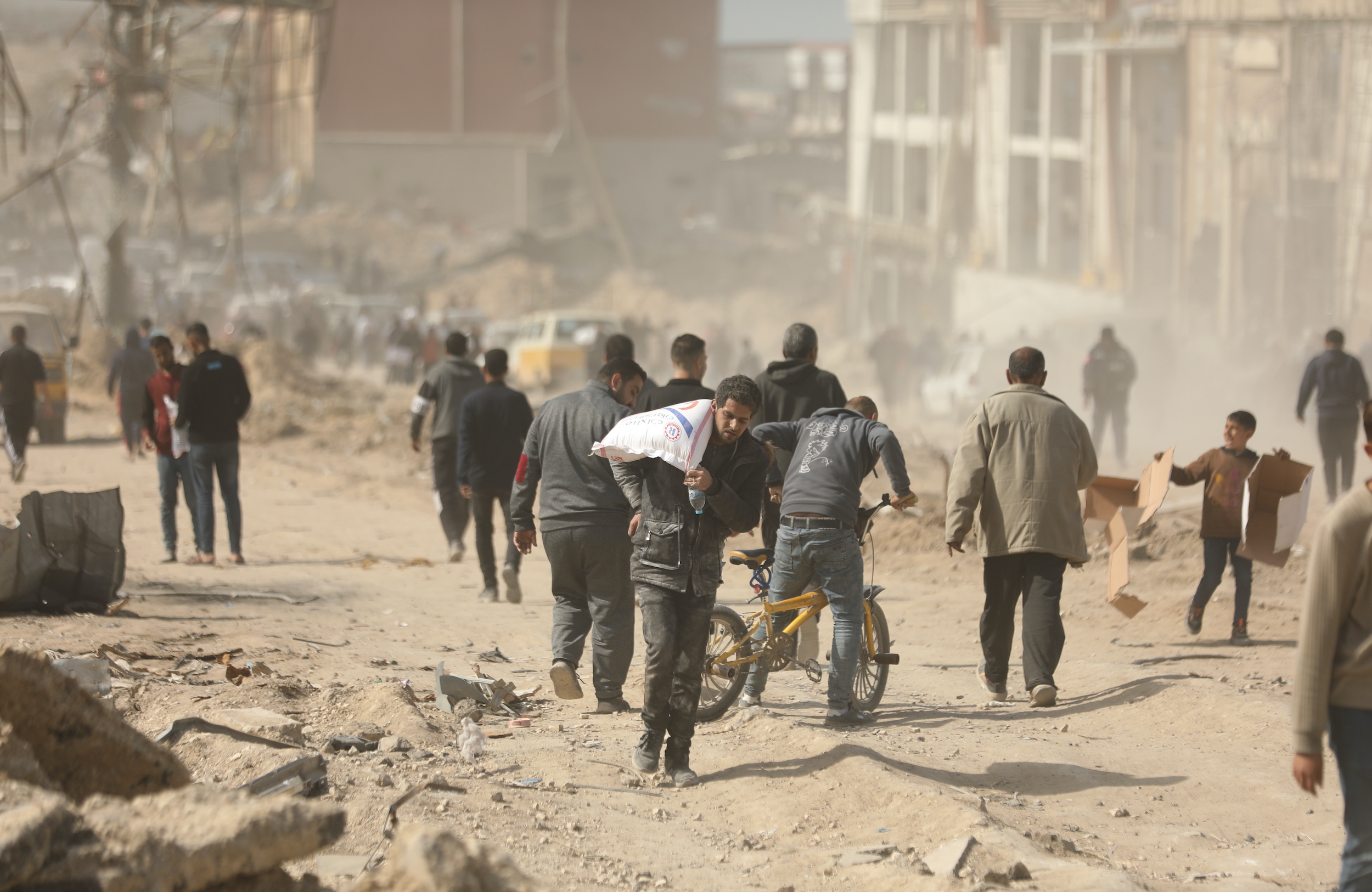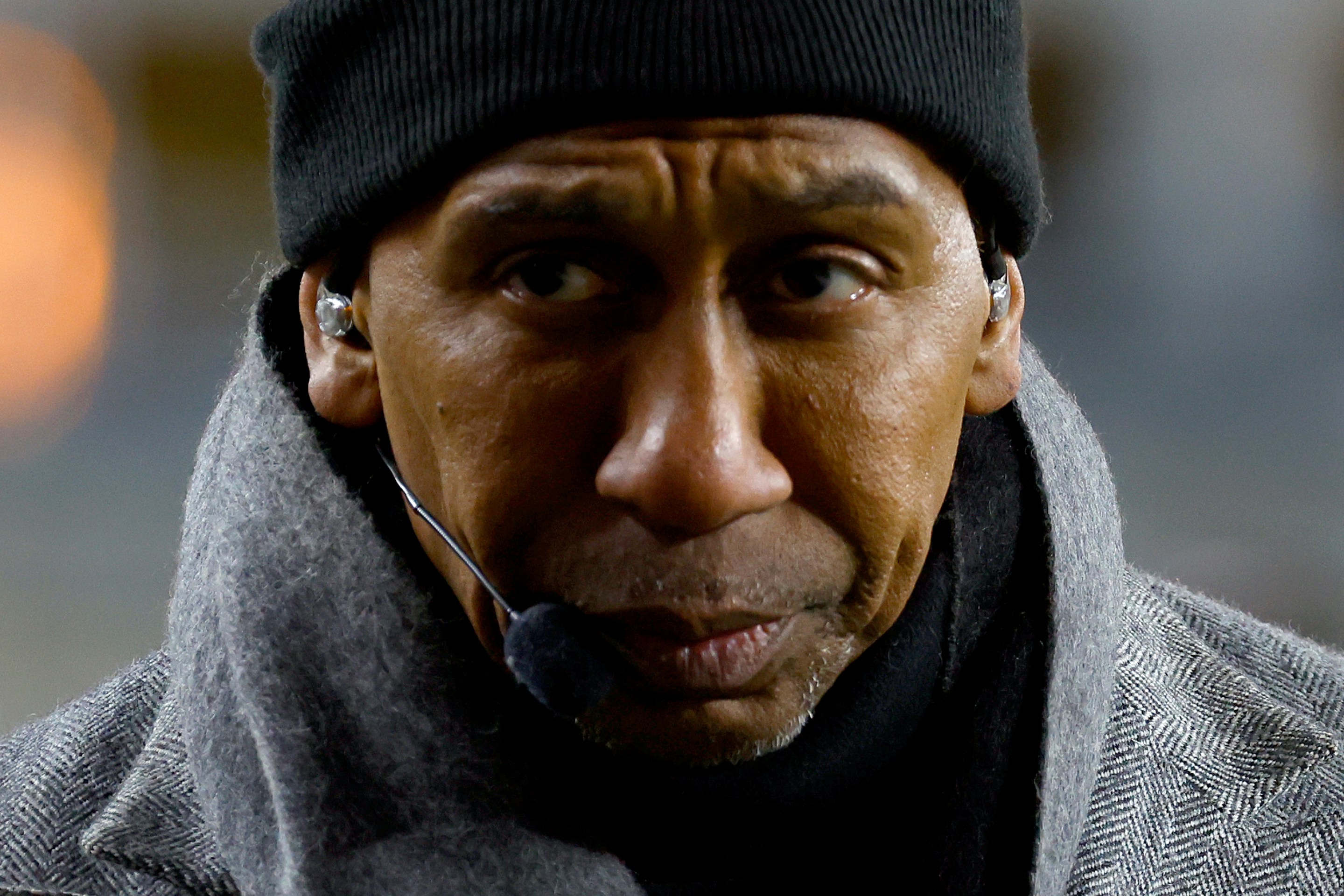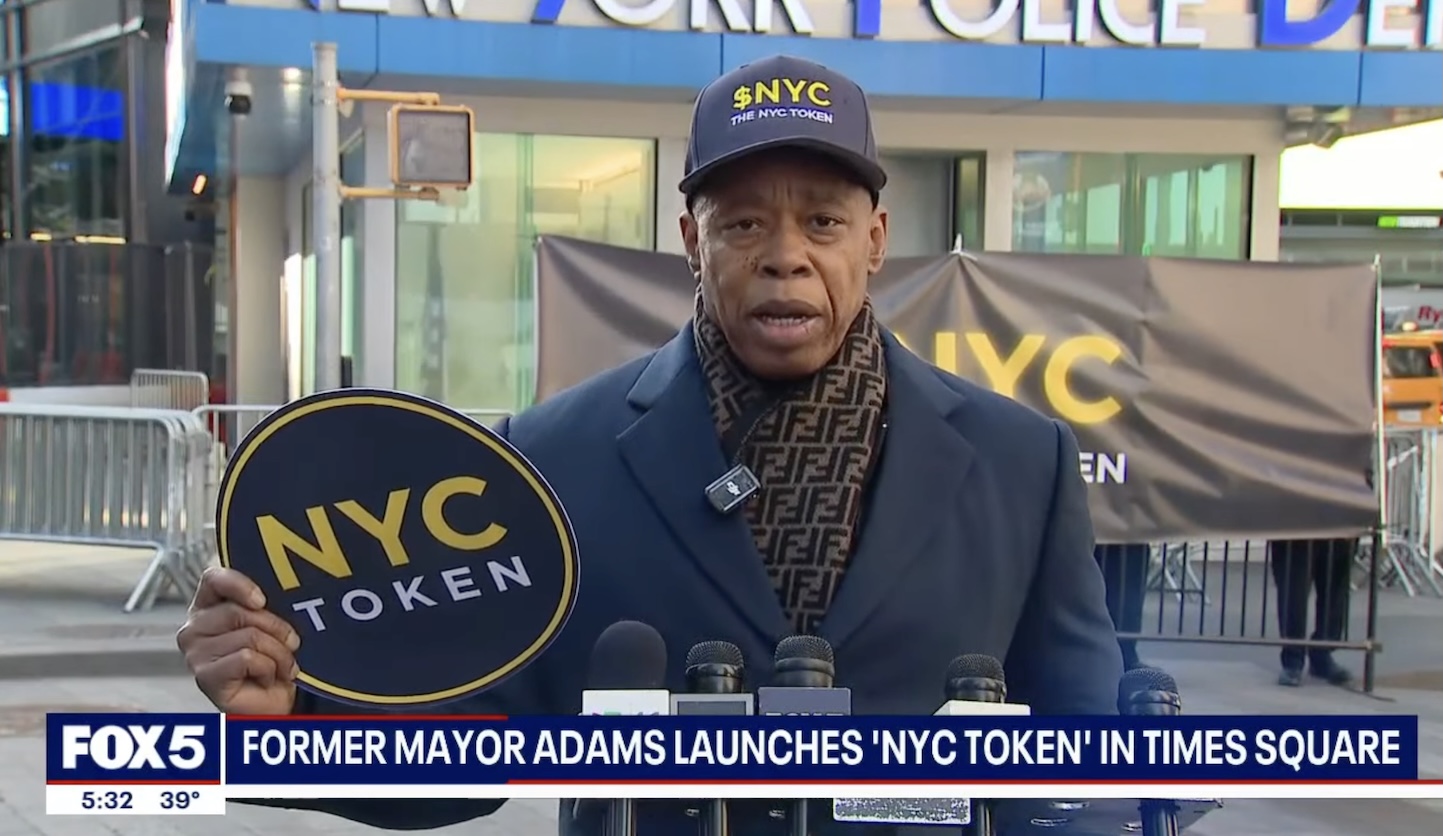Rather than pressure Israel to allow in more humanitarian aid for Palestinians, President Joe Biden took the path of least resistance. Last week the U.S. military began to airdrop food into Gaza, at a fraction of what was needed for the population. It was the worst possible outcome: Israel’s big brother allowed its assault to continue with impunity, while the airdrop provided insufficient relief for the starving people in Gaza. Feign compassion, but change none of the underlying causes. On top of that, sell more weapons to keep it going.
On Feb. 29, over 100 Palestinians were reportedly killed and hundreds more injured in Gaza City, as the Israeli military opened fire on civilians while they tried to receive aid from a relief convoy. Video from the convoy site showed gunfire in the early morning, and subsequent shots fired later in the day as people fled. Later, a video from Gaza journalist Hani Alshaer showed one of the aid trucks being used to collect the wounded and dead. A doctor at Al-Shifa Hospital told Al Jazeera that many victims came in with gunshot and shrapnel wounds. Directors at two other hospitals told the Associated Press that the vast majority of victims they received had gunshot wounds.
What happened at that relief convoy felt like a new method to reach the same result, previously achieved by bombing hospitals, schools, homes, and other civilian buildings. In this instance in northern Gaza, the Israeli officials’ excuse for killing Palestinians was that they were acting in a threatening manner. In reality, the region had been starving for weeks due to a suspension of aid.
To summarize the bloodshed, many media outlets referred to it as chaos—something intensified or deadly. In the most egregious example, CNN described it as a “chaotic incident.” But was this so beyond the norm of the past five months as to be called chaos?
On Feb. 22, the secretary general of Doctors Without Borders, Christopher Lockyear, briefed the United Nations Security Council in New York and urged an immediate and sustained ceasefire. He described the results of Israel’s collective punishment: amputations done without anesthesia, pregnant women giving birth in tents, and the long-term effects on children, some of whom have no remaining family.
“Children who survive this war will not only bear the visible wounds of traumatic injuries, but the invisible ones too—those of repeated displacement, constant fear, and witnessing family members literally dismembered before their eyes,” Lockyear said. “These psychological injuries have led children as young as five to tell us they would prefer to die.”
On Feb. 27, the United Nations humanitarian office warned that 576,000 people, approximately a quarter of the population in Gaza, were on the verge of famine. Palestinians had resorted to eating animal feed and whatever else they could find, even if it was detrimental to their health. Anything to fill an empty stomach. In one instance, a 2-year-old died of poisoning after he ate bread made of fodder.
It comes as no surprise that people dying of hunger could possibly abandon patience or decorum at the promise of relief, however scant. Initially, officials said the Palestinian deaths had been caused by a stampede, before later admitting that military forces had fired on the crowd. The IDF also released two minutes of edited drone footage, with no sound or color and minimal detail. As the journalist Séamus Malekafzali pointed out, the presentation felt intentional. From that high up, at that video resolution, the Palestinians and their frantic movements resembled an invasive species or bacteria, rather than humans desperate for food. It was inadvertently a useful look into how the IDF has perceived Gaza for years through its god’s-eye view: dehumanized dots that can be snuffed out without a second thought.
The “Flour Massacre,” as it was called, was the culmination of tactics of suffocation. While the northern part of Gaza was deprived of resources due to the suspension, the south was deprived due to Israeli settlers creating an intentional blockade. Earlier in February, Loveday Morris of the Washington Post observed a group of men who put together a plan to set up tents and prevent trucks from crossing in from the Egypt border. In this effort, there was no attempt at disguising intent. The motive was painfully obvious. From the report:
“Dead, dead, dead Arabs,” one camper shouts at a roaring volley of outgoing fire. Then she notes the presence of a reporter. “Hamas,” she corrects herself.
In the morning, aid trucks stretch along the Israeli border with Egypt. Amid a sudden panic that deliveries might be allowed to enter through a gate normally used as an exit, the protesters shifted their tents.
Israeli soldiers look on. “Man, don’t you feel like shooting off a round over there?” asks one demonstrator, looking out toward Egypt.
“I don’t want them to shoot you,” the soldier replies. “You are more important.”
This is a shockingly common activity, to gloat about what they have in front of those who have nothing. The trophy varies: land, homes, food. At the end of February, the Nitzana Border Crossing resembled a street fair. Families gathered to picnic, protest, and eat cotton candy with the Israeli military, while those in Gaza ate animal feed. It's not a new tactic, either. In 2017, settlers held a barbecue outside of a West Bank jail containing Palestinians who were on hunger strikes.
The death toll in Gaza recently surpassed 30,000, and the horror remains so routine and methodical that it is difficult to keep up. A couple of days after the Flour Massacre, Israel conducted a strike on another aid truck and killed nine people. A few weeks ago, the Israeli military made a handcuffed Palestinian prisoner walk into Nasser Hospital and tell everyone to evacuate; hours later, he was reportedly shot to death by an IDF soldier. The hospital was nonfunctional days later. One graphic photo from the Zeitoun district last week showed the remains of a body crushed by a vehicle, turned into a mass of fat and viscera, its only remaining humanlike feature a zip-tied arm, indicating his status in Israeli custody.
The world’s self-proclaimed peacekeepers have failed to a degree beyond redemption. Any remaining norms can be found dead alongside thousands of Palestinians. The past five months should prompt reevaluation of the highest systems in the world. How can the Western powers claim any remaining authority in prosecuting human-rights violations? What is the purpose of a World Court if it can’t help children who wish for death?
There was an expectation—an assumption?—that international diplomacy could achieve results. South Africa brought charges of genocide against Israel; the court did not order a ceasefire. Any time a U.N. resolution proposes a ceasefire, the unilateral U.S. veto snuffs it out. There were, we were led to believe, supposed to be consequences for conducting and facilitating genocide.
In an article for Protean Magazine, Bassem Saad considered the ICJ’s extraordinarily high bar for genocide. If what Israel is doing to Gaza and the West Bank does not qualify, and is treated instead as an outlier of humanitarian crises, “perhaps [Palestine] is more constructively thought of as a limit-case, laying bare the intrinsic shortcomings of the international human rights legal apparatus.” If the existing framework has failed Palestinians so thoroughly, is it even useful enough that it shouldn’t be completely replaced? If someone like Christopher Lockyear can describe how children of single-digit age want to die because of the conditions around them, and the U.S. can actively prevent those children from being helped, why should the U.N. exist at all?
Part of me wants to believe that the Western world will have no credibility after this display of selective empathy, but even that grim state of affairs is more optimistic than the alternative: that nothing changes. The argument of whether these are atrocities is settled, with no input required from the international powers and legal rulings. The world has seen and read about it for themselves. It’s still happening. If anything, it’s getting worse. First it was airstrikes and bullets; now it’s airstrikes and bullets and disease and starvation. Israel zealously continues an act that the ICJ fails to prosecute properly, because it knows there are no repercussions coming. The reason “chaos” feels so insufficient as a descriptor for the killing in Gaza is because that word suggests a temporary disorienting state, one that eventually ends. But after five months, no one has any inclination to make it stop. The world powers have decided that perpetual chaos is what Gaza deserves.






